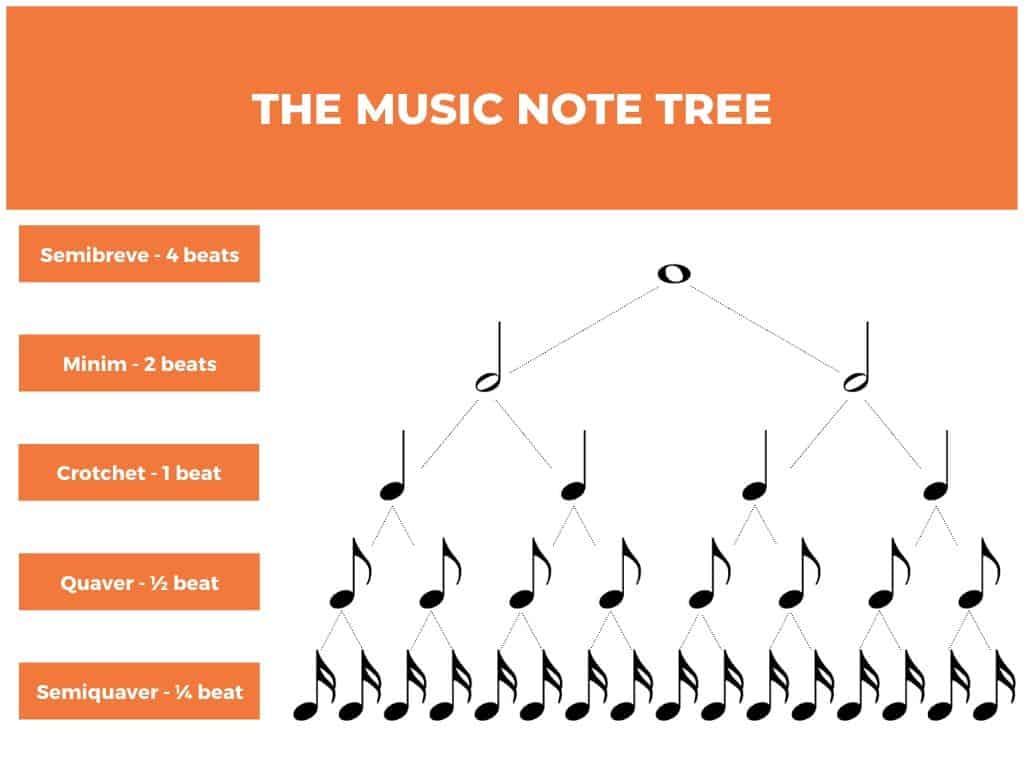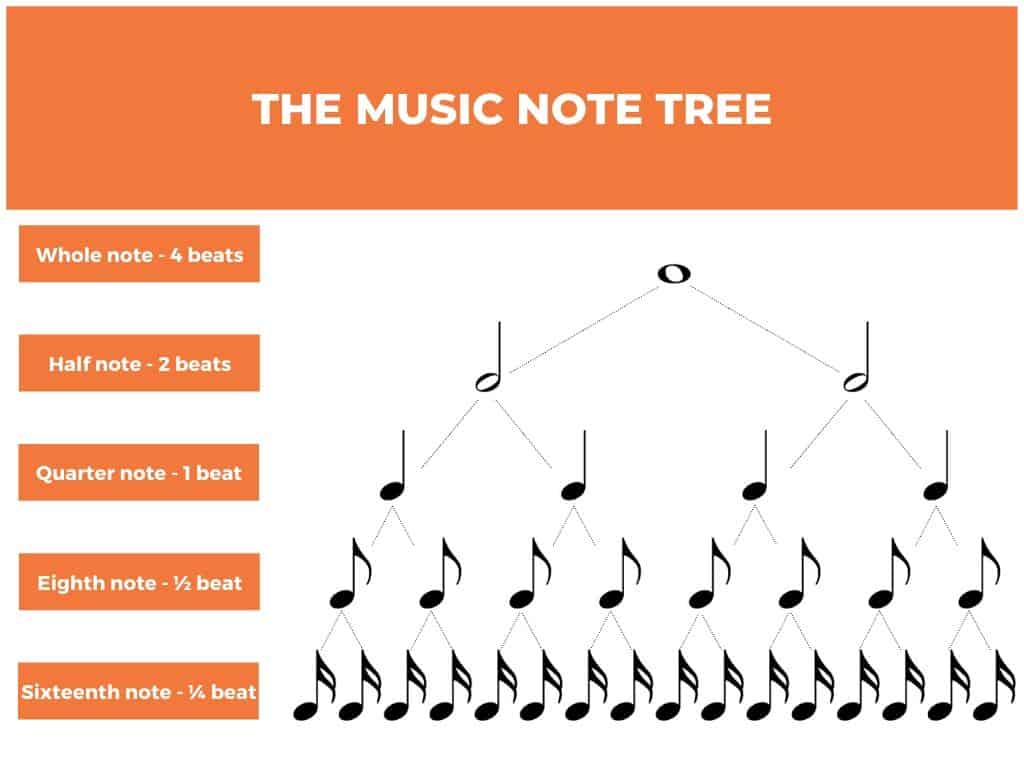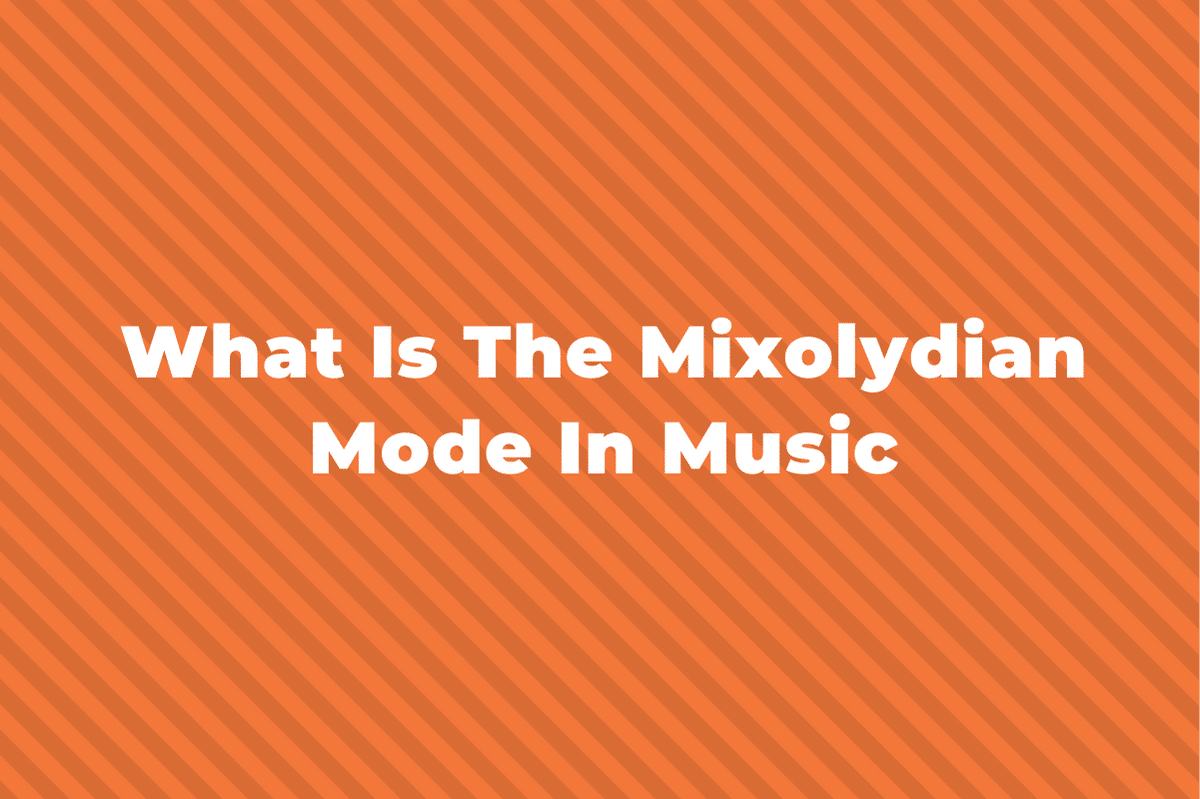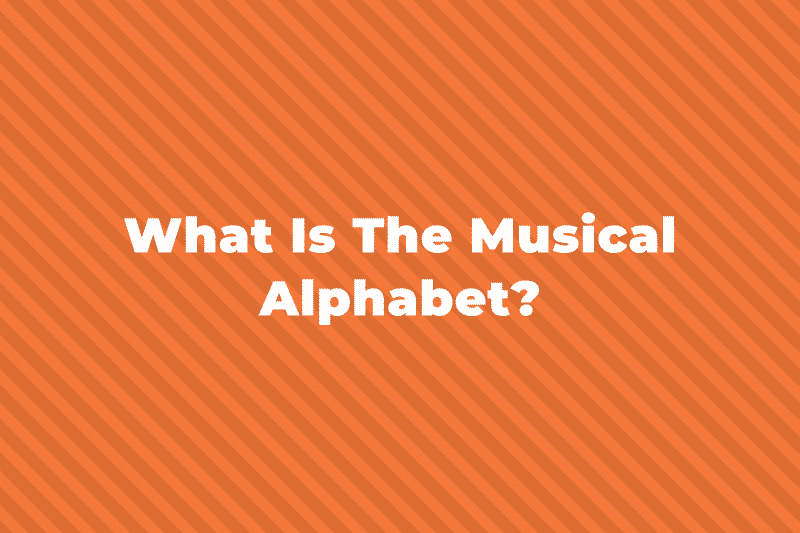The music note tree is a great visual way to understand the relationship between music notes. Getting to grips with it will help you when learning about note values and time signatures.
In this post, I’ll share what the music note tree is as well as how we use it to visualize the time values of notes. Let’s take a look.
What Is The Music Note Tree?
The music note tree is a visual representation of the time values of notes.
You might also see it referred to as a rhythm tree or a note pyramid, but these are all the same thing.
Here is the music note tree drawn out (there’s a US note value version below).


It starts with a semibreve (whole note) at the top, which can be split into two minims (half notes).
Two minims are equal to one semibreve, which is why they’re called half notes, as they’re half of a whole note.
Then, each minim can be split into two crotchets (quarter notes).
Two crotchets are equal to one minim, and four crotchets are equal to one semibreve (which is why they’re called quarter notes, as they’re a quarter of a whole note).
Then, each crotchet can be split into two quavers (eighth notes).
Two quavers are equal to one crotchet, or four quavers are equal to one minim, or eight quavers are equal to one semibreve (which is why they’re called eighth notes, as they’re an eighth of a whole note).
Then, each quaver can be split into two semiquavers (sixteenth notes).
Two semiquavers are equal to one quaver, or four semiquavers are equal to one crotchet, or eight semiquavers are equal to one minim, or sixteen semiquavers are equal to one semibreve (which is why they’re called sixteenth notes).
One thing to mention is that you don’t have to use a crotchet (quarter note) to represent one beat.
This is common as most time signatures that beginners start by learning are those with the number four as their bottom number, which represents a crotchet beat.
But you could use any note to represent one beat. For time signatures with a number two as their bottom number, then a minim (half note) would represent one beat.
Or, for time signatures with the number eight as their bottom number, a dotted crotchet would represent one beat.
Check out my post on how time signatures work here to learn more.



